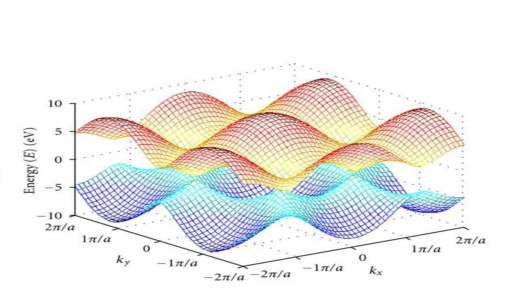
Neutrinovoltaic converts the thermal motion of graphene atoms and the flux of invisible radiation into electric current using multilayer graphene–silicon nanomaterials. Protected since 2013 by international patent WO2016142056A1, the technology is now defined by the Holger Thorsten Schubart–NEG Master Equation for Neutrinovoltaics:
P(t) = η · ∫V Φ_eff(r,t) · σ_eff(E) dV
The equation demonstrates that power output arises from the additive interaction of multiple spectra, including neutrino–electron scattering, CEνNS, cosmic muons, radiofrequency fields, infrared fluctuations, and micro-vibrations.
Structurally, the nanomaterial consists of alternating layers of graphene and doped silicon, with each graphene layer sandwiched between 2 silicon layers (Fig. 1). The first layer of graphene is deposited on a metallic layer, usually aluminium. The number of graphene-silicon layers is 12 to 20, optimally 12 layers. The nanomaterial is applied to one side of the metallic layer, making the side with the nanomaterial the positive pole and the uncoated side the negative pole. Under normal conditions 20 °C, such a current generation plate with a size of 200×300 mm has a voltage of approx. 1.5 V and a current of approx. 2 A.

A Mechanism by Which the Energy of the Surrounding Radiation Fields Can Be Converted into Electric Current
Graphene is the only material currently known that belongs to the 2D materials but can only exist stably in a three-dimensional coordinate system, as a 3D material. Viewing the graphene layer through a high-resolution microscope reveals the presence of wave-like oscillations on the sea surface (Fig. 2). when adjacent areas switch between concave and convex curvature. The stronger the influence of energy and thermal fields, the stronger the oscillations of the graphene atoms and thus the frequency and amplitude of the oscillations of “graphene waves”. Theoretical studies provide an explanation that the source of this process is the electron-phonon bond, as it suppresses the rigidity of long-wave bending and amplifies extraplanar fluctuations.

It is the presence of “graphene waves” that allow an electric current to be generated, and the amplitude and frequency of the oscillations of “graphene waves” depend on the quality of graphene deposition. They are at their maximum with one layer of graphene, but if the technology of graphene deposition is infringed and several of its layers are applied on top of each other, then the amplitude and frequency of the oscillations of the “graphene wave” decrease. The explanation of these experimental results was independently confirmed by ETH professor Vanessa Wood (Swiss Federal Institute of Technology, Zurich) and her colleagues, who showed that when materials smaller than 10-20 nanometres are produced, i.e. 5000 times thinner than a human hair, the vibrations of the outer atomic layers on the surface of nanoparticles are large and play an important role in the behaviour of this material. These atomic vibrations or “phonons” are responsible for how electrical charge and heat are transferred in materials (Fig. 3).

Therefore, compliance with graphene deposition technology is a key technological task, especially for sheets larger than 100 x 100 mm. Graphene has an extremely high electric current density (one million times higher than that of copper) and record mobility of charge carriers. In graphene, each atom is bonded to 3 other carbon atoms in a two-dimensional plane, leaving one electron freely available in the third dimension for electron conductivity. In an interview with the journal Research Frontiers, Professor Thibado (University of Arkansas) explained, “This is the key to harnessing the motion of 2D materials as a source of inexhaustible energy. Tandem vibrations cause waves in the graphene layer, making it possible to extract energy from the surrounding space using advanced nanotechnology.”
Graphene layers are remarkably strong and elastic. Graphene has a very high thermal conductivity, which in combination with its high electrical conductivity allows the passage of an electric current millions of times higher than the maximum possible current in copper layers. At elevated temperatures, according to the Fermi-Dirac distribution, some of the electrons pass into the conduction band and “holes” remain in the valence band. This determines the sufficiently high electrical conductivity of graphene at room temperature. Conduction electrons and “holes” in graphene have no effective mass, i.e. they cannot be stationary, but are constantly moving at the “Fermi velocity”, which in graphene is about 106 m/s, i.e. already relativistic. This leads to a very high mobility of the charge carriers in graphene, which is at least two orders of magnitude higher than their mobility in silicon, and to the “ballistic” nature of their movement along the layer. The free path of conduction electrons and holes in graphene at room temperature is more than 1 μm.
The harmonic oscillations of “graphene waves” that transform into resonance are in fact the work necessary to convert the thermal (Brownian) motion of graphene atoms and the energy of the particles of the surrounding radiation fields of the invisible spectrum, including the kinetic energy of neutral neutrino particles, into electric current. As in the currently manufactured electric generators installed in power plants, the developed Bedini electricity generation schemes and other schemes of magnetic motors for fuel-free electricity generation, an electromotive force (EMF) occurs in each graphene layer due to the interaction of magnetic and electric fields. The main difference, however, is that in neutrinovoltaic technology the pulsating mechanism of interaction does not occur through the rotation of the rotor with a magnetic coil, but through the process of micro-vibration of graphene in the nanomaterial, which is another physical principle of electromotive force (EMF) occurrence. The EMF that occurs in each graphene layer causes electrons to flow in one direction, i.e. an electric current is created. The movement of electrons in one direction is achieved by depositing layers of each layer with alloying elements that create a p-n junction that allows an electric current to pass in only one direction, i.e. the effect of a thin film diode occurs. The multilayer nature of the nanomaterial offers a solution to the problem of obtaining the maximum possible electrical power from a unit surface, as one layer of graphene cannot provide enough energy for industrial applications.
Influence Of Neutrinos on the Oscillation Process of the “Graphene Wave”.
In 2019, it was published that scientists at the Karlsruhe Institute of Technology (KIT) were able to determine the mass of neutrinos with unprecedented accuracy. According to KIT, neutrinos are at least 500,000 times lighter than an electron; the mass of the particles is about 1.1 electron volts. The mechanism of the interaction of neutrinos with matter was elucidated and described in the publications of the COHERENT collaboration at Oak Ridge National Laboratory (USA). It has been proven that low-energy neutrinos are involved in a weak interaction with argon nuclei. This process is called coherent elastic neutrino nuclear scattering (CEvNS). Neutrinos “strike” a bowling ball like a tennis ball and “strike” the large and heavy nucleus of an atom and transfer a tiny amount of energy to it. This causes the nucleus to bounce almost imperceptibly (Fig. 4).
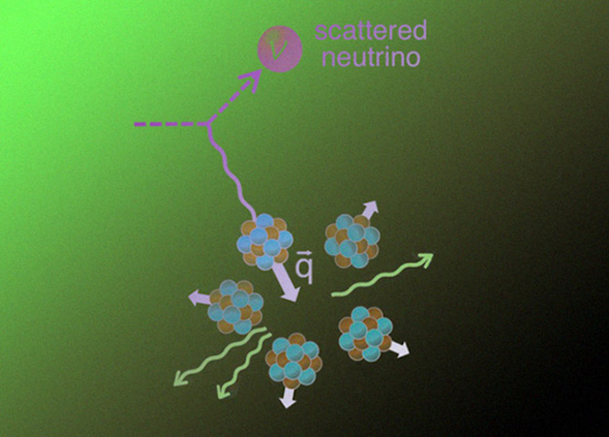
A similar interaction of low-energy neutrinos takes place in the interaction with graphene. Argon has a serial number of 18 and an atomic weight of 39.948 in the periodic table of chemical elements, while graphene (carbon) has a serial number of 6 and an atomic weight of 12.011. This suggests that the effect of neutrino impacts on the nuclei of graphene atoms will be more pronounced than on argon nuclei. The greater the kinetic energy of neutrinos, the greater the effect of their interaction with graphene nuclei. This means that the oscillations of its atoms are stronger. The size of the nucleus of a graphene atom is very small compared to the size of the graphene atom itself, so only a small fraction of neutrinos with mass can interact with the nucleus of a graphene atom and cause it to oscillate. As you may know, the neutrino flux through 1 cm2 of the Earth’s surface in 1 second is 60 billion, so even a fraction of a percent of such neutrino flux contributes to the oscillation process of “graphene waves”, although it is currently not possible to estimate the contribution of the neutrino effect to the oscillation of graphene atoms compared to other energy fields and thermal (Brownian) motion. According to international scientists from renowned faculties, this process is now clearly scientifically confirmed, hence the technology and its applications are called neutrinovoltaics.
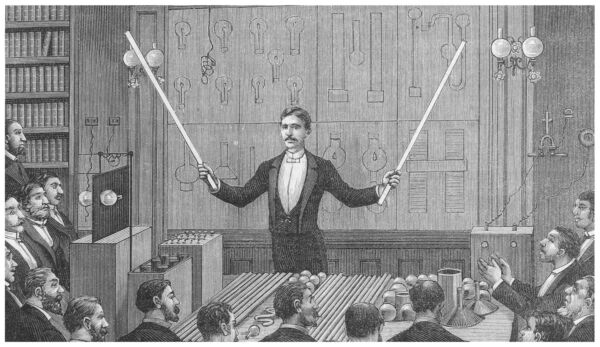





Ground was broken in the field of neutrino power in 2015 when two independent scientists, Takaaki Kajita in Japan and Canadian Arthur McDonald, proved that neutrinos – tiny rays of cosmic particles that permeate almost everything in the universe – does in fact have mass. And, as Einstein’s Relativity Theory goes, e=mc2, or everything with mass also contains energy. For their discovery, the two scientists were each bestowed the prestigious Nobel Prize in Physics.
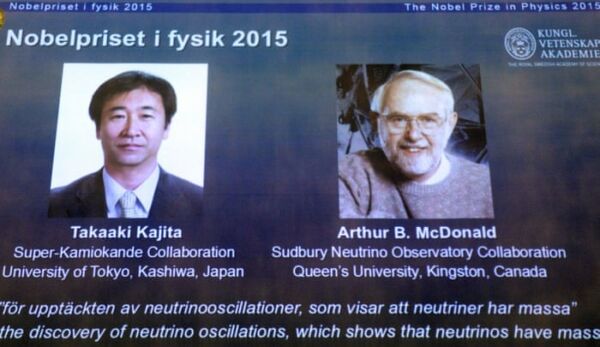

Ground was broken in the field of neutrino power in 2015 when two independent scientists, Takaaki Kajita in Japan and Canadian Arthur McDonald, proved that neutrinos – tiny rays of cosmic particles that permeate almost everything in the universe – does in fact have mass. And, as Einstein’s Relativity Theory goes, e=mc2, or everything with mass also contains energy. For their discovery, the two scientists were each bestowed the prestigious Nobel Prize in Physics.


The Neutrino® Energy Group devotes its resources to the research and development of neutrinovoltaic technologies that convert invisible radiation spectra, including neutrinos, into usable electrical energy. Since the Nobel Prize in Physics in 2015 confirmed that neutrinos possess mass, global research investment into neutrino science has expanded significantly, with institutions worldwide pursuing both fundamental and applied studies. The integration of artificial intelligence is accelerating progress, allowing scientists to model particle interactions, refine multilayer graphene–silicon structures, and optimize energy conversion processes with unprecedented efficiency.


The Neutrino® Energy Group devotes its resources to the research and development of neutrinovoltaic technologies that convert invisible radiation spectra, including neutrinos, into usable electrical energy. Since the Nobel Prize in Physics in 2015 confirmed that neutrinos possess mass, global research investment into neutrino science has expanded significantly, with institutions worldwide pursuing both fundamental and applied studies. The integration of artificial intelligence is accelerating progress, allowing scientists to model particle interactions, refine multilayer graphene–silicon structures, and optimize energy conversion processes with unprecedented efficiency.


The Neutrino® Energy Group unveiled the first prototypes of the Neutrino Power Cube, delivering 5–6 kW of continuous electricity, and the Neutrino Life Cube, a 1–1.5 kW survival unit with climate control and water generation. Both operate independently of weather, sunlight, or fuel, using graphene–silicon nanostructures optimized with AI. Their modular design scales exponentially: 200,000 Power Cubes equal about 1,000 MW, the output of a mid-sized nuclear power station. Together they demonstrate how neutrinovoltaics provide decentralized, resilient power for households, businesses, and humanitarian relief.
The Neutrino® Energy Group unveiled the first prototypes of the Neutrino Power Cube, delivering 5–6 kW of continuous electricity, and the Neutrino Life Cube, a 1–1.5 kW survival unit with climate control and water generation. Both operate independently of weather, sunlight, or fuel, using graphene–silicon nanostructures optimized with AI. Their modular design scales exponentially: 200,000 Power Cubes equal about 1,000 MW, the output of a mid-sized nuclear power station. Together they demonstrate how neutrinovoltaics provide decentralized, resilient power for households, businesses, and humanitarian relief.

The Neutrino® Energy Group launched Project 12742, advancing neutrino-based communication able to penetrate oceans and planetary crust. In parallel, the Pi Mobility platform expanded beyond the Pi Car to include Pi Fly, supporting endurance and avionics loads, and Pi Nautic, reducing maritime reliance on diesel generators. These initiatives extend neutrinovoltaics beyond stationary power, integrating mobility and secure communication into one infrastructure-independent system.

The Neutrino® Energy Group launched Project 12742, advancing neutrino-based communication able to penetrate oceans and planetary crust. In parallel, the Pi Mobility platform expanded beyond the Pi Car to include Pi Fly, supporting endurance and avionics loads, and Pi Nautic, reducing maritime reliance on diesel generators. These initiatives extend neutrinovoltaics beyond stationary power, integrating mobility and secure communication into one infrastructure-independent system.
The Neutrino® Energy Group introduced its blockchain-based instruments NET8 and Pi-12, designed to secure licensing, integration, and cooperative development across industries while linking energy and market architecture.
Later the same year, the Group published its Master Formula of Neutrinovoltaics: P(t) = η · ∫V Φ_eff(r,t) · σ_eff(E) dV. This equation defines how invisible fluxes, from neutrino–electron scattering to CEνNS, RF fields, and thermal vibrations, act additively within graphene–silicon nanostructures to generate continuous current. Together these milestones consolidated neutrinovoltaics as both a validated scientific technology and a scalable economic framework.
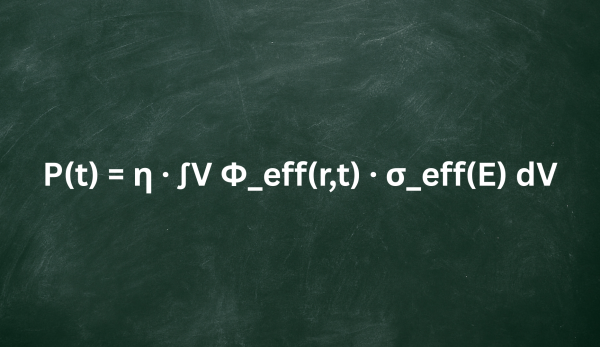

The Neutrino® Energy Group introduced its blockchain-based instruments NET8 and Pi-12, designed to secure licensing, integration, and cooperative development across industries while linking energy and market architecture.
Later the same year, the Group published its Master Formula of Neutrinovoltaics: P(t) = η · ∫V Φ_eff(r,t) · σ_eff(E) dV. This equation defines how invisible fluxes, from neutrino–electron scattering to CEνNS, RF fields, and thermal vibrations, act additively within graphene–silicon nanostructures to generate continuous current. Together these milestones consolidated neutrinovoltaics as both a validated scientific technology and a scalable economic framework.
Neutrinovoltaic technology, developed by the Neutrino® Energy Group, is a groundbreaking method of generating electricity from non-visible radiation. The name combines “neutrino” and “photovoltaic,” reflecting its principle: multilayer nanostructures of graphene and doped silicon that vibrate under the impact of neutrinos, cosmic rays, and other ambient fields, producing an electromotive force harvested as direct current.
While mainstream research only recently acknowledged that ultrathin carbon layers such as graphene can respond to and conduct electrical energy, Holger Thorsten Schubart and the Neutrino® Energy Group have been advancing neutrinovoltaic technology since 2015. Building on the Nobel Prize–winning confirmation that neutrinos possess mass, Schubart directed the Group’s resources toward developing multilayer graphene and doped silicon structures engineered to transform the constant flux of neutrinos and other non-visible radiation into direct current.
All Things Neutrino
Research into neutrinos and their interactions with matter accelerated after Takaaki Kajita and Arthur B. McDonald received the 2015 Nobel Prize in Physics for proving that neutrinos have mass. Their discovery, based on the Super-Kamiokande and SNO experiments, confirmed that neutrinos oscillate between different species, a property that fundamentally changed particle physics.
Neutrinos of specific flavors are produced in particle reactions, while neutrinos of defined mass states propagate through space. The confirmation that neutrinos possess mass, and therefore energy, established the theoretical foundation for technologies seeking to convert the constant flux of these particles, along with other forms of non-visible radiation, into usable current.
Building on this knowledge, the Neutrino® Energy Group has developed engineered nanomaterials composed of graphene and doped silicon that resonate under the influence of neutrinos, cosmic rays, and other ambient radiation fields. These vibrations generate an electromotive force, harvested as direct current in what is known as neutrinovoltaic technology. Unlike photovoltaics, this system functions independently of sunlight and environmental conditions, offering a continuous, weather-independent energy source.
The international team, led by German mathematician and entrepreneur Holger Thorsten Schubart, advanced this field despite initial skepticism within the scientific community, which had long regarded neutrinos as non-interacting. Today, neutrinovoltaics stand as a rigorously engineered technology grounded in the verified physics of neutrino mass and supported by ongoing research into material science and particle interactions.
How It All Started
Discussions about neutrinovoltaic technology began at international conferences in 2014. At that time, the Neutrino® Energy Group’s concept of developing an entirely new form of electricity generation from neutrino fluxes and other invisible radiation was met with skepticism. Many critics argued that neutrinos, being nearly massless and weakly interacting, could not realistically be used as an energy source, and presentations were often dismissed as speculative or even “pseudo-science.” Experimental data presented by members of the Neutrino® Energy Group’s Scientific Board were likewise rejected without a supporting theoretical framework.
Gradually, however, recognition grew that the ambient radiation fields surrounding us represent a potential source of continuous energy. Yet for any breakthrough to gain acceptance, experimental results must be accompanied by rigorous theoretical models. Only the combination of verified interaction mechanisms and reproducible data has begun to establish a coherent and credible picture of neutrinovoltaics as a valid scientific and technological pathway.
How is the energy of ambient radiation fields converted into electric current?
The transformation mechanism relies on vibrations within the graphene lattice, which has a hexagonal crystal structure. In this lattice, small spontaneous displacements of atoms combine with thermal motion to generate larger surface oscillations. These waves, with horizontal polarization, are known in acoustics as Lyav waves. Because of the unique geometry of graphene, the atoms move coherently, unlike the random molecular motion observed in liquids.
Thermal Brownian motion is also central to the conversion process. The vibrations of the outer atomic layers in nanoparticles thinner than 10–20 nanometers strongly influence how the material responds to external radiation fields. For effective conversion, graphene must be applied with atomic precision, ideally in layers only one atom thick. Any irregularity reduces efficiency significantly. To achieve this standard, the Neutrino® Energy Group developed specialized equipment capable of depositing graphene and doped silicon onto metallic wafers with dimensions of 200×300 mm and larger, ensuring uniformity and performance.
The Master Formula of Neutrinovoltaics
The foundation of neutrinovoltaic science is not speculation but mathematics. The Neutrino® Energy Group has developed a set of equations that describe how invisible radiation fluxes are transformed into electrical current. At the center is the Holger Thorsten Schubart–NEG Master Equation for Neutrinovoltaics:
P(t) = η · ∫V Φ_eff(r,t) · σ_eff(E) dV
This expression defines the power output P(t) as a function of conversion efficiency (η), effective flux density (Φ_eff), interaction cross-section (σ_eff), and the active material volume (V). It demonstrates in measurable terms how omnipresent fluxes can be translated into direct current.
To capture the full picture, the formula extends beyond neutrinos alone. The multilayer graphene and doped silicon structures respond to an additive spectrum that includes:
- Neutrino–electron scattering
- Non-standard interactions with electrons and quarks
- Coherent elastic neutrino–nucleus scattering (CEνNS)
- Cosmic muons and secondary particles
- Ambient radiofrequency and microwave fields
- Thermal and infrared fluctuations
- Mechanical micro-vibrations
Each mechanism contributes to lattice oscillations. These vibrations are converted into an electromotive force, creating a power system that remains “always on” regardless of weather, sunlight, or grid conditions.
By formalizing neutrinovoltaics in equations, the Neutrino® Energy Group provides both scientific transparency and a scalable framework. The Master Formula marks the transition from theory to industrial application, guiding the design of devices such as the Neutrino Power Cube and Pi Mobility platforms.
What Role Does Graphene Play in Neutrinovoltaic Technology?
Thanks to its hexagonal crystal lattice, graphene exhibits surface vibrations that form so-called “graphene waves”, visible under high-resolution microscopy. A frequent question is why graphene, rather than graphite, is used. Experiments by the Neutrino® Energy Group, later independently confirmed by Professor Vanessa Wood and her colleagues, showed that when materials are engineered at dimensions below 10 to 20 nanometers, around 5,000 times thinner than a human hair, the vibrations of the outer atomic layers become dominant and decisively shape material properties.
These vibrations, known as phonons, govern the transfer of electrical charge and heat. In graphene, atomic vibrations are up to 100 times stronger than in silicon. When the intrinsic vibration frequencies of graphene waves, driven by thermal Brownian motion, overlap with the external influence of surrounding radiation fields, including neutrinos, resonance occurs. This atomic resonance amplifies oscillations and increases electron reflux at the graphene–doped silicon interface.
Because graphene contains virtually no impurities, and doping directs electron flow, the combined effect produces a measurable current. Physicists describe this as “oblique scattering”, where electron clouds align their motion in a single direction, enabling the conversion of invisible radiation into usable electricity.
An energy source that doesn’t require energy storage systems?
Neutrino energy is a continuous and decentralized power source that operates independently of weather, daylight, or geographic conditions. Unlike intermittent renewables, neutrinovoltaic technology reduces reliance on large-scale energy storage by providing a constant baseline supply. Even covering a fraction of a grid’s demand directly offsets the need for equivalent storage capacity. Its solid-state, maintenance-free design makes neutrinovoltaics especially compelling: compact units such as the Neutrino Power Cube can deliver autonomous electricity where it is needed, and the underlying nanomaterial principle allows integration into applications ranging from households to electronic devices.
The Application of Neutrino Energy
Neutrinovoltaic technology represents a fundamental shift in how renewable energy can be generated. Unlike solar or wind, it is not limited by weather or daylight. By using multilayer structures of graphene and doped silicon, engineered to resonate under the impact of neutrinos, cosmic radiation, and other non-visible spectra, neutrinovoltaic systems produce a continuous flow of direct current, 24 hours a day and in all environments. Because neutrinos and related particles penetrate nearly all natural and artificial materials, these systems can operate indoors, outdoors, and even underwater, offering true location independence. This constant and infrastructure-light approach marks neutrinovoltaics as one of the first renewable technologies capable of providing autonomous, sustainable, and resilient energy at any time of year.
Electromobility: Pi Mobility
The potential of neutrinovoltaics reaches beyond stationary energy supply into the very fabric of transport. With Pi Mobility, the Neutrino® Energy Group and its international partners are rethinking how vehicles can sustain themselves, turning cars, aircraft, and ships into autonomous systems no longer tethered to external charging or fossil fuels.
The Pi Car project stands at the heart of this transformation. Born from a Memorandum of Cooperation with leading institutes such as C-MET Pune in India, supported by Simplior Technologies, SPEL Technologies, and additional global partners, its aim is nothing less than the creation of the first car powered continuously by neutrinovoltaic composites. These multilayer nanostructures of graphene and doped silicon are engineered to vibrate under the impact of neutrinos, cosmic radiation, infrared fluctuations, and other invisible energy fields. The resonance generates an electromotive force that can be harvested as direct current. For the user, this translates into true independence: under typical conditions, leaving the car outside for an hour can provide up to 100 kilometers of range. Unlike conventional electric vehicles that depend on grid charging, the Pi Car is designed to draw directly from the constant background flux of the universe.
Pi Mobility, however, does not stop at the road. Pi Fly brings neutrinovoltaic principles to aviation and UAV platforms, where weight and endurance are limiting factors. By embedding ultrathin composites into structural surfaces, power can be continuously delivered to propulsion and avionics, reducing battery loads and extending flight times. In maritime applications, Pi Nautic adapts the same approach to yachts, boats, and ships. Onboard systems such as navigation electronics, climate control, and auxiliary loads can be powered independently of diesel generators or port infrastructure. This not only reduces emissions, but also provides resilience and autonomy at sea.
The choice of “Pi” is deliberate. Just as π has no end, Pi Mobility represents a principle of continuity. It is a reminder that energy does not have to be episodic, dependent on charging cycles or fuel deliveries, but can be constant, ambient, and available wherever a vehicle exists. With Pi Car, Pi Fly, and Pi Nautic, the Neutrino® Energy Group demonstrates that electromobility is no longer bound by outlets or fuel tanks. It becomes a domain of uninterrupted autonomy, supported by the invisible energy flux that surrounds us all.
Digital Ecosystem: NET8 and Pi-12
Neutrinovoltaics represent a leap in how energy is generated, but equally important is how this value is measured, exchanged, and scaled globally. To anchor this, the Neutrino® Energy Group has developed two blockchain-based instruments that connect physical energy output with digital transparency: the NET8 token and the Pi-12 token.
The NET8 token, deployed on Solana, is designed as an access token directly linked to renewable energy capacity. Each token represents 10 kilowatts of installed neutrinovoltaic generation, backed by reserves during the initial phase to guarantee security and credibility. With transparent auditing and global tradability, NET8 establishes a verifiable metric for energy production. This makes it not only a digital asset but also a bridge between scientific progress, industrial deployment, and financial markets.
The Pi-12 token complements this architecture by focusing on the Pi Mobility ecosystem. Covering land, air, and sea applications such as Pi Car, Pi Fly, and Pi Nautic, the token is structured to ensure participation in revenue from licensing, patents, and OEM integrations. Its supply is capped at 12 billion, with over 80 percent locked, creating long-term stability. Unlike R&D-driven financing mechanisms, Pi-12 functions as a marketing and awareness tool, linking mobility innovations to digital ownership.
Together, NET8 and Pi-12 demonstrate how the Neutrino® Energy Group integrates energy science with the digital economy. They ensure that advances in graphene-based neutrinovoltaic systems and mobility solutions are embedded in a transparent, scalable, and decentralized financial framework. In this way, the flow of invisible energy becomes not only electricity but also a measurable, tradable value that accelerates adoption worldwide.
Project 12742
Project 12742 takes its name from the Earth’s diameter in kilometers, symbolizing its global reach and ambition. The project explores how the unique properties of neutrinos and related non-visible particles can be applied to establish new forms of communication that transcend the limitations of conventional systems.
Unlike radio waves or satellites, which are blocked or distorted by terrain, oceans, or atmospheric conditions, neutrinos can penetrate matter virtually without interference. This characteristic makes them ideal candidates for creating communication channels that remain stable even under extreme conditions.
The goal of Project 12742 is to investigate and develop technologies capable of encoding and decoding signals through neutrino interactions. Such a system could enable communication that is resistant to interruption, whether by natural obstacles or infrastructure failures, and provide a level of reliability that no current system can match.
Still in research and development, Project 12742 stands as a clear example of resilience by design. By rethinking how information can be transmitted across the planet, it points toward a future where communication is as uninterrupted and constant as the invisible flux of particles on which it relies.
What does the future hold for Neutrino Energy?
The Neutrino® Energy Group is advancing multiple international initiatives in applied physics, material science, and energy innovation. Among these, the Neutrino Power Cube and the Neutrino Life Cube hold particular importance for what they can offer our world today and in the future.
The Neutrino Power Cube is a compact, autonomous generator with a net capacity of 5–6 kW, engineered to provide a continuous and independent electricity supply. Designed as a two-part cabinet, one compartment houses the power-generation modules while the other integrates inverters and control systems. Measuring 800 × 400 × 600 millimetres and weighing about 50 kilograms, the unit delivers alternating current at 220V and 380V, as well as direct current for computers and other sensitive equipment.
The Neutrino Life Cube builds on this principle for humanitarian and off-grid applications. By combining a smaller 1–1.5 kW Power Cube with integrated climate control and an air-to-water purification system capable of producing up to 25 litres of clean water per day, it represents a lifeline for disaster zones, remote areas, and communities with limited infrastructure.
Both systems are based on neutrinovoltaic technology, which transforms the constant interactions of neutrinos and a wide spectrum of invisible radiation into direct current electricity. Unlike solar or wind, these systems function continuously, independent of weather or daylight, providing resilience where conventional grids cannot.
While the Neutrino® Energy Group is engaged in many significant projects worldwide, the Power Cube and Life Cube remain at the forefront. They demonstrate how decades of scientific progress can now be translated into practical, decentralized solutions that deliver autonomy, reliability, and a cleaner path to the future.







